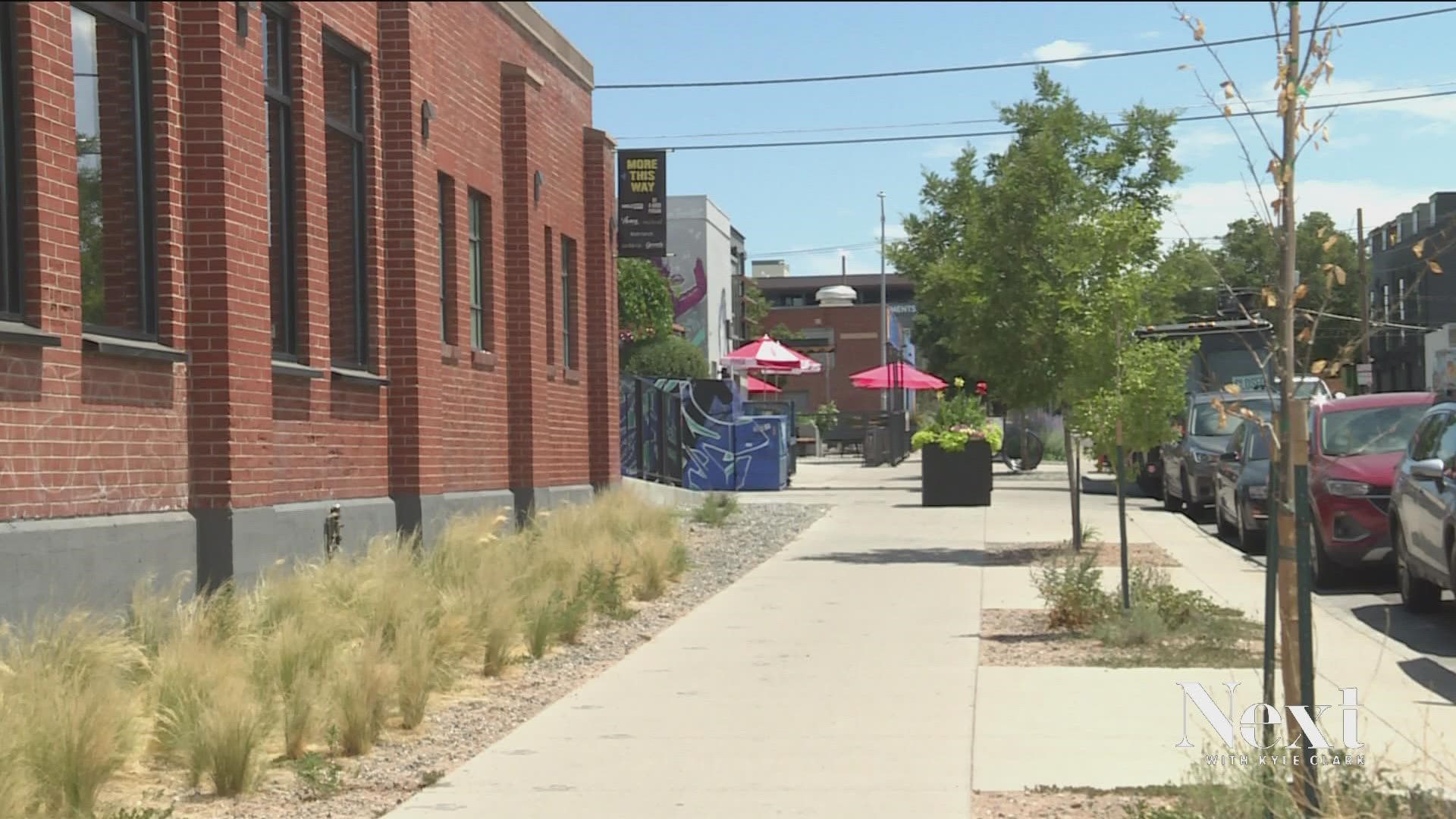DENVER — Minority neighborhoods make up more than half of all acreage in Denver, but they account for less than a third of the city's tree canopy, a 9Wants to Know investigation found.
Neighborhoods with fewer trees are hotter, which is significant as the world warms. In the 10 Denver neighborhoods with the most tree cover, the majority of residents are white. Only one of the top 25, Harvey Park South, is a neighborhood that is not mostly white.
Meanwhile, minority neighborhoods make up 13 of the 25 worst neighborhoods for tree canopy cover.
9Wants to Know compared Denver's 2020 tree canopy data with race and ethnicity data from the 2014-2018 American Community Survey, compiled into the same neighborhoods by the City and County of Denver.
In neighborhoods where the majority of residents are white, tree canopy is typically 18%. In neighborhoods where the majority of residents are minorities, that drops to 13%. In Denver, 65% of neighborhoods are majority white.
Among the findings:
- Northeast Park Hill is a diverse neighborhood near Commerce City that is 38% Black, 28% Hispanic and 25% white. Only 5% of the neighborhood has any tree canopy.
- The most tree coverage in Denver is in the Country Club neighborhood, which is 92% white. Trees blanket 38% of the neighborhood’s 416 acres.
- The DIA neighborhood, which is 35% white, is rated the city's worst for tree cover: 0.2% of the neighborhood is shaded by trees.
- Central Park and CBD are exceptions. In both neighborhoods, about 72% of the residents are white, and each one has about 4% canopy coverage.
The map below shows the findings:
New tree plantings
As for where Denver Parks and Recreation planted new trees between 2020 and 2022, some have gone to the neighborhoods that need it.
The Central Park neighborhood got 898 new trees, while 686 trees were added to Gateway-Green Valley Ranch. Those neighborhoods have 4% and 5% of canopy cover, respectively.
Most of the 8,126 trees planted in the past two years went to neighborhoods where a majority of residents are white – 71% were planted in 51 majority-white neighborhoods, and 29% were planted in 27 minority neighborhoods.
Ten of the 25 Denver neighborhoods that got the most new trees already had some of the best canopy levels going into the planting period. Shady spots like Washington Park and South Park Hill received an influx of new trees.
The map below shows new trees planted:
Limited opportunities
Chris David is vice president of GIS and data science for American Forests, a nonprofit conservation organization that aims to grow more trees across the United States. He said the standard for a grassland city like Denver is a 20% canopy, though opportunities to plant trees are limited in neighborhoods with more people.
“Where there’s more people, there’s more buildings,” David said. “And people live in them, so you can’t knock them down. And there’s more road, which you can’t plant the tree on. You can plant trees on the sidewalk along the road, but there’s not as much area where it’s possible to plant.”
In Denver, 62% of new trees went to neighborhoods with 20% or less canopy, while 35% of new trees went to neighborhoods with 10% or less canopy.
“To us, the most important thing is making sure that when you’re making decisions with scarce resources around available trees and the available resources to be able to plant trees, to be thinking about which neighborhoods need it the most,” David said.
David’s organization calculates whether neighborhoods have as many trees as they should with the Tree Equity score. It uses a variety of national data to examine trends across the county. Denver can be viewed here.
Read about our process on our GitHub here.
Reach investigative reporter Zack Newman through his phone at 303-548-9044. You can also call or text securely on Signal through that same number. Email: zack.newman@9news.com. Call or text is preferred over email.
SUGGESTED VIDEOS: Investigations & Crime

